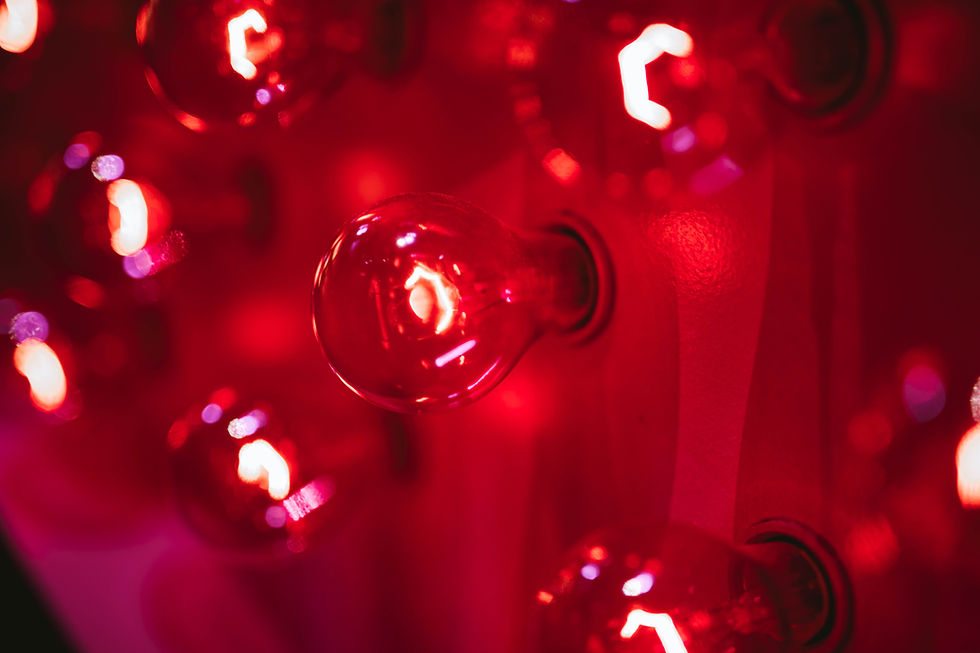
Red light therapy (RLT), a non-invasive therapeutic technique, has gained popularity for its potential to enhance cell regeneration and accelerate healing. One of the central mechanisms behind RLT's effectiveness lies in its ability to increase the production of adenosine triphosphate (ATP), the primary energy currency of cells, thereby promoting cellular repair and growth.
How Red Light Therapy Works
RLT involves the application of low-level wavelengths of red or near-infrared light to the skin. These wavelengths, typically between 600 to 900 nanometers, are absorbed by cellular chromophores, especially cytochrome c oxidase, a component of the mitochondria (the cell’s powerhouse). This absorption stimulates the mitochondria to increase ATP production by enhancing the electron transport chain, which facilitates oxidative phosphorylation (Karu, 1999).
ATP Production and Cellular Energy
ATP is critical for many cellular functions, including muscle contraction, nerve impulse propagation, and protein synthesis. In the context of cell regeneration, an increase in ATP levels provides cells with the energy necessary to perform essential repair functions, such as DNA replication, protein assembly, and membrane regeneration. This energy boost also accelerates the turnover of damaged cells and promotes the growth of new, healthy cells (Hamblin, 2016).
Red Light Therapy and Healing
The enhanced ATP production triggered by RLT has been shown to improve wound healing, reduce inflammation, and increase collagen production in the skin. Collagen is a protein that gives structure to skin, muscles, and connective tissues, and its production is vital for repairing damaged tissue. Clinical studies have demonstrated that RLT can speed up wound closure and promote tissue recovery in both superficial and deep wounds (Avci et al., 2013).
Moreover, RLT has been found to stimulate angiogenesis (the formation of new blood vessels), which enhances nutrient and oxygen supply to tissues, further supporting the healing process. The reduction in inflammation facilitated by RLT also contributes to a faster recovery from injuries or surgeries (Alghamdi et al., 2012).
Conclusion
Red light therapy's ability to stimulate ATP production plays a central role in its regenerative and healing effects. By enhancing cellular energy levels, it promotes tissue repair, reduces inflammation, and accelerates recovery, making it a promising tool in both clinical and cosmetic settings.
References
Alghamdi, K. M., Kumar, A., & Moussa, N. A. (2012). Low-level laser therapy: A useful technique for enhancing the proliferation of various cultured cells. Lasers in Medical Science, 27(1), 237–249.
Avci, P., Gupta, A., Sadasivam, M., Vecchio, D., Pam, Z., Pam, N., & Hamblin, M. R. (2013). Low-level laser (light) therapy (LLLT) in skin: Stimulating, healing, restoring. Seminars in Cutaneous Medicine and Surgery, 32(1), 41-52.
Hamblin, M. R. (2016). Mechanisms and mitochondrial redox signaling in photobiomodulation. Photochemistry and Photobiology, 92(5), 487-491.
Karu, T. I. (1999). Primary and secondary mechanisms of action of visible to near-IR radiation on cells. Journal of Photochemistry and Photobiology B: Biology, 49(1), 1-17.
Restore creates custom light therapy protocols that access a deep layer of nervous system cellular regeneration. From anxiety to pain relief, we are revolutionizing nervous system support. To learn more, visit this page.
Comments